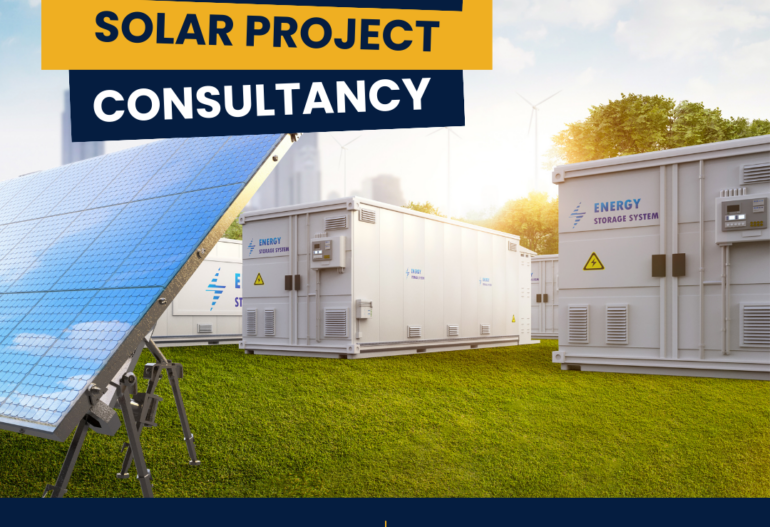Introduction
As the world continues to grapple with the challenges of climate change and the need for sustainable energy sources, utility-scale solar projects have emerged as a promising solution. These large-scale solar installations can generate significant amounts of clean energy, making them a crucial component of the transition to a greener and more sustainable future. However, designing and implementing a utility-scale solar project is a complex undertaking that requires careful planning and consideration. In this blog post, we will explore the key factors that need to be taken into account before embarking on such a project.
- Site Selection
One of the most critical decisions when planning a utility-scale solar project is site selection. The location of your solar installation will significantly impact its efficiency and, consequently, its long-term profitability. Here are some factors to consider:
a. Solar Resource: Assess the solar irradiance and weather patterns in the area to estimate the energy generation potential. Tools like solar maps and historical weather data can help with this assessment.
b. Land Availability: Ensure you have access to a sufficient amount of land for the solar panels, inverters, and other necessary infrastructure. The land should be suitable for solar development, with minimal shading and obstructions.
c. Proximity to Grid Infrastructure: Consider the proximity to existing electrical infrastructure, as connecting to the grid can be a substantial cost factor. Additionally, evaluate the capacity of the local grid to accommodate your project.
d. Environmental Impact: Assess the environmental impact of your project, including potential effects on local ecosystems and habitats. Compliance with environmental regulations is essential.
- Regulatory and Permitting Requirements
Navigating the regulatory landscape is a crucial step in any utility-scale solar project. Regulations can vary significantly by region and country, so it’s essential to be well-informed about the following:
a. Permitting: Identify the necessary permits and approvals required for your project. This may include environmental permits, zoning approvals, and building permits.
b. Interconnection: Understand the interconnection process and requirements for connecting your solar project to the grid. Compliance with grid codes and standards is essential.
c. Tax Incentives and Subsidies: Research available incentives, tax credits, and subsidies that can help offset the initial costs of your project. Government policies can significantly impact the financial viability of your solar installation.
- Financial Considerations
Utility-scale solar projects require substantial upfront investments. Proper financial planning is essential to ensure the project’s economic viability. Key financial considerations include:
a. Project Financing: Explore various financing options, such as loans, grants, power purchase agreements (PPAs), and tax equity financing. Choose the approach that best suits your project’s needs and financial goals.
b. Cost Estimation: Develop a detailed cost estimate that includes expenses for equipment, labor, land acquisition, permitting, and ongoing operation and maintenance.
c. Revenue Generation: Calculate revenue projections based on the expected energy generation, electricity prices, and any long-term contracts, such as PPAs.
- Technology Selection
Selecting the right solar technology is crucial for optimizing energy generation and project longevity. Consider factors like:
a. Solar Panel Type: Evaluate the efficiency, durability, and cost-effectiveness of different solar panel technologies, such as monocrystalline, polycrystalline, or thin-film.
b. Tracking Systems: Determine if solar tracking systems, which follow the sun’s path throughout the day, would enhance energy yield at your location.
c. Inverters and Storage: Choose the appropriate inverters and storage solutions to convert and store the generated energy efficiently.
- Operations and Maintenance
Successful utility-scale solar projects require ongoing maintenance and monitoring to ensure optimal performance. Develop a maintenance plan that includes:
a. Regular Inspections: Schedule routine inspections of solar panels, inverters, and electrical systems to identify and address issues promptly.
b. Cleaning and Vegetation Control: Implement cleaning procedures to remove dirt and debris from solar panels. Manage vegetation to prevent shading.
c. Performance Monitoring: Invest in monitoring systems to track energy production and identify underperforming components.
Conclusion
Designing a utility-scale solar project is a significant undertaking that requires careful consideration of site selection, regulatory requirements, financial planning, technology choices, and ongoing maintenance. By addressing these factors comprehensively and thoughtfully, you can increase the chances of a successful and sustainable solar project that contributes to a cleaner and more sustainable energy future. Remember that collaboration with experienced professionals in the solar industry can be invaluable in navigating these complex decisions and ensuring the project’s success.
Contact our expert team before designing your utility-scale solar project.
+8801886997646
www.grit.energy
Grit Technologies Limited: Making clean energy affordable and accessible to all…



